The Tutorial Subcommittee of the PCIC Technical Conference is sponsoring six half-day tutorials on Thursday, September 21, 2017. Continuing Education Units, (0.35 CEU) will be awarded to each participant who successfully completes a course and submits the required CEU form. Light refreshments will be provided during the sessions. A lunch will be provided between the morning and afternoon sessions, (12:00 p.m. to 1:00 p.m. in room Grand Foyer – Grab and Go) for all tutorial registrants. The price of lunch is included in the price of the tutorial, so plan to end your morning session or begin your afternoon session by having lunch with your fellow attendees.
First time attendees registered for the entire conference are eligible to attend one tutorial for the reduced rate of $50. A second tutorial can be attended by paying full registration cost. This must be indicated on the registration form and completed prior to September 1, 2017; otherwise the full tutorial fee will apply. (NOTE: To ensure there are enough handout materials for all participants, those not pre-registered will be charged full price at the door.)
Tutorial PCIC 2017-1: Harmonics Analysis using Commercial Software for Petrochemical and Renewable Energy Systems
Tutorial PCIC 2017-2: CSA Z462 – Workplace Electrical Safety – Upcoming 2018 Edition – What You Need to Know?
Tutorial PCIC 2017-3: Transformer Design Parameters
Tutorial PCIC 2017-4: Partial discharge (PD) monitoring of high voltage networks – introduction, theory, best practice and case studies from 10 years of industrial applications
Tutorial PCIC 2017-5: ASD Primer – Motor and ASD application Seminar — Applying off the shelf ASDs and Motor
Tutorial PCIC 2017-6: Theory and Fundamentals of Power Management Systems
Tutorial PCIC 2017-1: Harmonics Analysis using Commercial Software for Petrochemical and Renewable Energy Systems
8:00 a.m. – 11:45 a.m., Hyatt Imperial 4
Abstract: This tutorial introduces the fundamentals of harmonic analysis and their impact on power systems, series and parallel resonance, Fourier series, and THD. Analysis steps required for different types of plants (including oil and gas systems) along with a discussion of harmonic content mitigation equipment will be presented. A discussion on the updates to IEEE 519-2014 and how commercial software packages comply with it will be presented. This tutorial provides harmonic analysis criteria for systems, which may include steam turbine generator harmonic distortion, large adjustable (variable) speed drive distortion, harmonic issues introduced by lower 6-pulse rectifiers for UPS or battery chargers along with common industry analysis requirements such as total bus harmonic distortion limits and individual harmonic current distortion limits. Some discussion on the impact of harmonic distortion on machine performance such as power factor and transformer K factor considerations will also be presented. The tutorial will also discuss how to select study scenarios which allow for the worst-case harmonic voltage and current distortion determination at individual locations within a refinery or at the PCC with the utility. A brief discussion on IEC harmonic standards will also be presented.
Instructors:
Dr. Afshin Majd – EasyPower
Hugo Albert Marroquin – ETAP
 Dr. Afshin Majd PhD, P.E is a registered professional engineer in CA, NY, and OR. He has more than 15 years’ experience in different sectors of the power industry including working with power system analysis software development companies. He has worked with design, consulting, oil and gas, mission critical facilities, as well as renewable energy companies. Afshin has taught a large number of power system courses at different institutions including UC Irvine Institute of Technology, and Portland State University. His courses have been offered both at graduate and undergraduate levels.
Dr. Afshin Majd PhD, P.E is a registered professional engineer in CA, NY, and OR. He has more than 15 years’ experience in different sectors of the power industry including working with power system analysis software development companies. He has worked with design, consulting, oil and gas, mission critical facilities, as well as renewable energy companies. Afshin has taught a large number of power system courses at different institutions including UC Irvine Institute of Technology, and Portland State University. His courses have been offered both at graduate and undergraduate levels.
Afshin has worked on harmonics, power flow, short circuit, device evaluation, filter design, coordination, system reliability, renewable energy grid interconnection, and engineering design and simulation of power plants. Dr. Majd is an IEEE senior member, and chairs IAS Academic Executive Subcommittee.
 Hugo Albert Marroquin, BScEE, PE – is a registered professional engineer in California. He is the designer and product manager for ETAPs AC and DC Arc Flash Analysis products. Albert is a working group member of IEEE P1584, IEEE P1458, IEEEP1814 and an active attendee of NFPA 70E seminars and meetings. He is a member of NFPAs electrical branch. Albert joined ETAP in January of 2001 as an electrical engineer and has over 17 years of power system analysis and software design. Albert is the electrical safety and dynamic-system engineering division manager. He has expertise in modeling all types of power systems including green energy technologies.
Hugo Albert Marroquin, BScEE, PE – is a registered professional engineer in California. He is the designer and product manager for ETAPs AC and DC Arc Flash Analysis products. Albert is a working group member of IEEE P1584, IEEE P1458, IEEEP1814 and an active attendee of NFPA 70E seminars and meetings. He is a member of NFPAs electrical branch. Albert joined ETAP in January of 2001 as an electrical engineer and has over 17 years of power system analysis and software design. Albert is the electrical safety and dynamic-system engineering division manager. He has expertise in modeling all types of power systems including green energy technologies.
He has worked on many arc flash, transient stability & harmonic studies and is responsible for the modeling of all dynamic components required for stability studies in power generation, nuclear, fossil & renewable plants.
Tutorial PCIC 2017-2: CSA Z462 – Workplace Electrical Safety – Upcoming 2018 Edition – What You Need to Know?
8:00 a.m. – 11:45 a.m., Hyatt Imperial 6
Abstract: Explore the changes and continual improvement process best practices as demonstrated between the 2015 and soon to be released 2018 editions as presented by the current Chair and Vice Chair of the CSA Z462 Technical Committee.
Learn to navigate the CSA Z462 document organizational structure in a practical and efficient manner.
Discuss the critical interactions between Clause 4.1.5.8 – Job Briefing and Clause 4.1.5.7 – Risk Assessment Procedure.
Open discussions and Q & A sessions on how to implement and sustain CSA Z462 as an integral portion of your Health and Safety Management System in your business units.
Instructors:
Mike Doherty: e-Hazard
Daniel Roberts: Schneider Electric
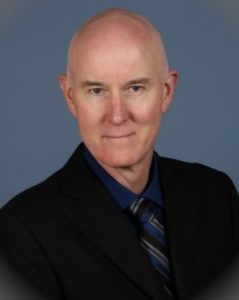 Mike Doherty has served as the Technical Committee Chair of CSA Z462 – Workplace Electrical Safety, since inception in 2006. He is the owner and President of Blue Arc Electrical Safety Technologies Inc. and also an independent consultant / trainer for eHazard in Canada. Mike completed 31 years of work at Ontario Hydro / OPG in their diverse nuclear power generation facilities in 2007. He is a licensed 442A electrician,Industrial Instrumentation Technician, Engineering Technician & H&S professional. He is a Senior Member of the Institute of Electrical and Electronics Engineers and an IEEE Petroleum & Chemical Industry Committee (PCIC) Emeritus. He is a featured monthly columnist for Electricity Business Magazine called “Electrical Safety 360”. Mike was honoured to be the 2013 recipient of the IEEE IAS Petroleum and Chemical Industry Committee (PCIC) Electrical Safety Excellence Award in Chicago, IL.
Mike Doherty has served as the Technical Committee Chair of CSA Z462 – Workplace Electrical Safety, since inception in 2006. He is the owner and President of Blue Arc Electrical Safety Technologies Inc. and also an independent consultant / trainer for eHazard in Canada. Mike completed 31 years of work at Ontario Hydro / OPG in their diverse nuclear power generation facilities in 2007. He is a licensed 442A electrician,Industrial Instrumentation Technician, Engineering Technician & H&S professional. He is a Senior Member of the Institute of Electrical and Electronics Engineers and an IEEE Petroleum & Chemical Industry Committee (PCIC) Emeritus. He is a featured monthly columnist for Electricity Business Magazine called “Electrical Safety 360”. Mike was honoured to be the 2013 recipient of the IEEE IAS Petroleum and Chemical Industry Committee (PCIC) Electrical Safety Excellence Award in Chicago, IL.
 Daniel Roberts graduated from Algonquin College in 1983 with an Electronic Technician diploma and from Ryerson University in 2006 with an Occupational Health & Safety certificate. He has worked in several roles for Schneider Electric’s Canadian field services operation since 1987; his current role is that of an electrical safety consultant.
Daniel Roberts graduated from Algonquin College in 1983 with an Electronic Technician diploma and from Ryerson University in 2006 with an Occupational Health & Safety certificate. He has worked in several roles for Schneider Electric’s Canadian field services operation since 1987; his current role is that of an electrical safety consultant.
Daniel is a longstanding Canadian Standards Association (CSA) member and serves on several CSA Technical Committees including CE Code Part 1, CSA Z1000 OHS Management Systems; CSA Z1002 OHS Risk Assessment, and CSA Z1005 Incident Investigation and Prevention. He is the vice-chair of the CSA Z462 Workplace Electrical Safety Technical Committee. He received the CSA 2013 Award of Merit for sustained and influential contributions to OHS and Electrical Safety Standards. He is also an ASSE member, an IEEE Senior member, and the vice-chair of the IEEE IAS Electrical Safety Committee. He has authored several ESW papers.
Tutorial PCIC 2017-3: Transformer Design Parameters
8:00 a.m. – 11:45 a.m., Hyatt Imperial 5,7,9
Abstract : The presentation will be on the Basic of Transformer Design. The presentation will explain how a transformer designer interprets parameters such as MVA, lightning Impulse, Switching impulse, Percentage Impedance supplied by a customer. It will touch on Power rating [MVA], Core, Rated voltages, Insulation Coordination, Short-circuit Impedance, Short-circuit Forces, Loss evaluation, Temperature limits, Cooling, Sound Level etc. It will also explain overload and life expectancy of a transformer as well when Delta winding is needed in Wye-Wye connection. The presentation will answer why in North America we like to regulate from low voltage side whereas in Europe regulates from high voltage side.
Instructor:
Ronnie Minhaz: Transformer Consulting Services Inc.
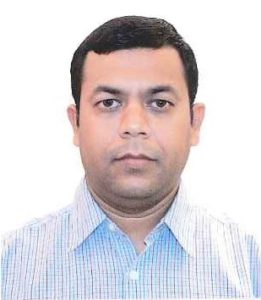 Ronnie Minhaz is the president and founder of Transformer Consulting Services, Inc. He has more than ten years’ experience in the specification and design of utility-scale transformers. Prior to forming his own company, he worked as a Transformer Design Engineer at Pauwels Canada (manufacturer), an Equipment Engineer at SNC Lava Lin (ECPM), an Equipment Engineer at Enmax Power (utility), and a Lead Substation Engineer at McGregor Construction (substation construction). Mr. Minhaz holds a BS in Electrical Engineering from the University of Manitoba, Canada, and is a registered professional engineer in the province of Alberta, Canada. He is an active member of IEEE (Senior Member) and IEEE Power & Energy Society. He has held various IEEE section-level leadership positions
Ronnie Minhaz is the president and founder of Transformer Consulting Services, Inc. He has more than ten years’ experience in the specification and design of utility-scale transformers. Prior to forming his own company, he worked as a Transformer Design Engineer at Pauwels Canada (manufacturer), an Equipment Engineer at SNC Lava Lin (ECPM), an Equipment Engineer at Enmax Power (utility), and a Lead Substation Engineer at McGregor Construction (substation construction). Mr. Minhaz holds a BS in Electrical Engineering from the University of Manitoba, Canada, and is a registered professional engineer in the province of Alberta, Canada. He is an active member of IEEE (Senior Member) and IEEE Power & Energy Society. He has held various IEEE section-level leadership positions
Tutorial PCIC 2017-4: Partial discharge (PD) monitoring of high voltage networks – introduction, theory, best practice and case studies from 10 years of industrial applications
1:00 p.m. – 4:45 p.m., Hyatt Imperial 4
Abstract; This tutorial introduces the technique of on-line partial discharge (OLPD) monitoring of in-service, high voltage (HV) plant (voltage range: >3000V). The tutorial is in three (3) parts:
Part 1 – An introduction to partial discharge (PD), including the physics behind PD and how it manifests itself within HV plant. A summary of the history of the development of the PD detection and sensor technology is provided including a review of the latest PD sensor and monitoring technologies.
Part 2 – Ten (10) case studies from past PD test projects from 10 years of industrial applications are presented, covering all of the main types of HV plant in operation within a typical petrochemical facility. The case studies include: HV Generators (2), Transformers (2), Cables (2), Switchgear (2), Direct-fed HV Motors and ASD/VSD operated HV Motors (2).
Part 3 -– A case study example of a complete HV network OLPD monitoring system design for a power network at a large, onshore oil refining facility is presented. This includes monitoring coverage of 110kV transformers and cables (2), 110kV gas insulated switchgear (GIS), 10kV air insulated switchgear (AIS) and 10kV cable networks, direct-fed 10kV motors and 10kV distribution transformers.
Instructors:
Lee Renforth: HVPD
Riccardo Giussani: HVPD
Michael Mendiola: Tengizchevroil
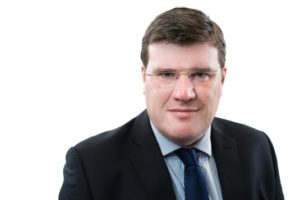 Dr. Lee Renforth studied Electrical and Electronic Engineering at the University of Manchester, UK between 1986 and 1993 where he received a BSc, MEng and finally a PhD in 1993, in the field of HV insulation breakdown under sponsorship of the National Grid Company (NGC), UK. In 1994 Lee founded IPEC where he was the Managing Director for 10 years before forming HVPD in Salford, UK in 2004. Over the past 13 years, HVPD have become one of the market leaders in the growing field of online partial discharge condition monitoring technology of in-service HV networks. Lee is a member of the IEEE.
Dr. Lee Renforth studied Electrical and Electronic Engineering at the University of Manchester, UK between 1986 and 1993 where he received a BSc, MEng and finally a PhD in 1993, in the field of HV insulation breakdown under sponsorship of the National Grid Company (NGC), UK. In 1994 Lee founded IPEC where he was the Managing Director for 10 years before forming HVPD in Salford, UK in 2004. Over the past 13 years, HVPD have become one of the market leaders in the growing field of online partial discharge condition monitoring technology of in-service HV networks. Lee is a member of the IEEE.
 Dr. Riccardo Giussani, Senior Development Engineer, HVPD Ltd, UK was born in Legnano, Italy and graduated as an Electrical Engineer from Politecnico di Milano, Italy and went on to complete a PhD in Electrical and Electronic Engineering at The University of Manchester, United Kingdom. Since joining HVPD in 2013 as Senior Development Engineer, he has been an active member of the HVPD R&D team, taking the lead on a number of projects and also contributed to a variety of published work, conference papers and patent applications. Riccardo is a member of Institution of Engineering and Technology (IET) and the IEEE Dielectrics and Electrical Insulation Society (DEIS).
Dr. Riccardo Giussani, Senior Development Engineer, HVPD Ltd, UK was born in Legnano, Italy and graduated as an Electrical Engineer from Politecnico di Milano, Italy and went on to complete a PhD in Electrical and Electronic Engineering at The University of Manchester, United Kingdom. Since joining HVPD in 2013 as Senior Development Engineer, he has been an active member of the HVPD R&D team, taking the lead on a number of projects and also contributed to a variety of published work, conference papers and patent applications. Riccardo is a member of Institution of Engineering and Technology (IET) and the IEEE Dielectrics and Electrical Insulation Society (DEIS).
 Michael Mendiola received both his Bachelor’s and Master’s degrees in Electrical Engineering from California Polytechnic State University, San Luis Obispo in 2008. He joined Chevron in 2007 working in Chevron’s Engineering Technology Company as an Electrical Engineering power systems specialist based in Houston, TX. From 2011 to the present, he has been working as a Project Electrical Discipline Engineer on a major capital project for Tengizchevroil (TCO) and is currently based in Farnborough, UK. Michael is a member of IEEE.
Michael Mendiola received both his Bachelor’s and Master’s degrees in Electrical Engineering from California Polytechnic State University, San Luis Obispo in 2008. He joined Chevron in 2007 working in Chevron’s Engineering Technology Company as an Electrical Engineering power systems specialist based in Houston, TX. From 2011 to the present, he has been working as a Project Electrical Discipline Engineer on a major capital project for Tengizchevroil (TCO) and is currently based in Farnborough, UK. Michael is a member of IEEE.
Tutorial PCIC 2017-5: ASD Primer – Motor and ASD application Seminar — Applying off the shelf ASDs and Motor
1:00 p.m. – 4:45 p.m., Hyatt Imperial 6
Abstract: The purpose of the seminar is to understand the basics of how an induction motor works with an Adjustable Speed Drive (ASD). Topics covered
-
- Motor Basics
- Starting Inrush and Consequences
- Slip / NEMA Motor Speed Torque Curves
- Torque & Horsepower
- Pros and Cons of Reduced Voltage Motor Starting – Why is an ASD a better soft starter.
- Adjustable Speed Drives
- How They Work
- Things To Be Aware Of: Dynamic Breaking, Long Lead Lengths, Bearing Issues and Harmonics
- Load Types: Variable Torque, Constant Torque and Constant Horsepower.
- Energy Savings
- Features: PID, Vector Control, drooping/load sharing, logic, etc.
Instructors:
Tom Stewart: TMEIC Corporation
Jeff Lovelace: TMEIC Corporation
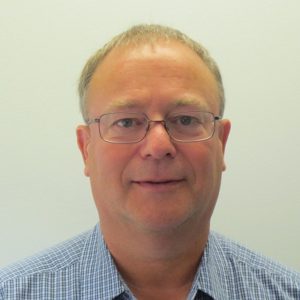 Tom Stewart attended British Columbia Institute of Technology (BCIT) and has a Diploma of Technology (Electrical Engineering Technology) 1980 and (Civil and Structural Engineering Technology) 1976. Tom has worked for 37 years specializing in electrical power applications and products such as Motors, ASDs, Switchgear, Transformers, Motor Control and associated products. He currently works for TMEIC Corporation as a Technical Sales Manager (2 Years). His past employers include Toshiba (18 years), Westinghouse (16 years) and Westburne (2 years). Tom is a member of IEEE and IAS. Tom has worked on several IEEE and API Committees including IEEE 303, 841, 1349 and 1566 as well as API 541, 546, and 547. He has presented at two previous PCIC Tutorials.
Tom Stewart attended British Columbia Institute of Technology (BCIT) and has a Diploma of Technology (Electrical Engineering Technology) 1980 and (Civil and Structural Engineering Technology) 1976. Tom has worked for 37 years specializing in electrical power applications and products such as Motors, ASDs, Switchgear, Transformers, Motor Control and associated products. He currently works for TMEIC Corporation as a Technical Sales Manager (2 Years). His past employers include Toshiba (18 years), Westinghouse (16 years) and Westburne (2 years). Tom is a member of IEEE and IAS. Tom has worked on several IEEE and API Committees including IEEE 303, 841, 1349 and 1566 as well as API 541, 546, and 547. He has presented at two previous PCIC Tutorials.
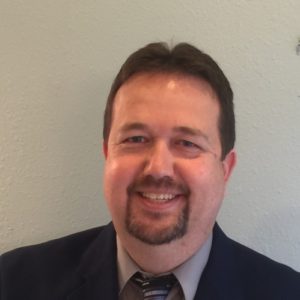 Jeffery Lovelace, P.E. (S’93, M’95, SM’06) received his B.S.E.E. degree from Mississippi State University in Starkville, MS, specializing in Control Systems and Power Distribution. He began his career with a systems integrator company and later moved to Baldor Electric where he was a designer and marketer of VFDs. At Lufkin Automation, he was the senior electrical engineer designing oil field control systems. As an entrepreneur, he led a small consulting firm that specialized in power quality analysis. Currently he is the Technical Sales Manager at TMEIC for medium voltage drives and motors. He has been a contributor to many technical and trade magazines. He has over 22 years of experience with VFDs, automation systems and power quality analysis. He is a registered professional engineer licensed by the state of Arkansas. He is a senior member of IEEE and a member of the National Society of Professional Engineers.
Jeffery Lovelace, P.E. (S’93, M’95, SM’06) received his B.S.E.E. degree from Mississippi State University in Starkville, MS, specializing in Control Systems and Power Distribution. He began his career with a systems integrator company and later moved to Baldor Electric where he was a designer and marketer of VFDs. At Lufkin Automation, he was the senior electrical engineer designing oil field control systems. As an entrepreneur, he led a small consulting firm that specialized in power quality analysis. Currently he is the Technical Sales Manager at TMEIC for medium voltage drives and motors. He has been a contributor to many technical and trade magazines. He has over 22 years of experience with VFDs, automation systems and power quality analysis. He is a registered professional engineer licensed by the state of Arkansas. He is a senior member of IEEE and a member of the National Society of Professional Engineers.
Tutorial PCIC 2017-6; Theory and Fundamentals of Power Management Systems
1:00 p.m. – 4:45 p.m., Hyatt Imperial 5,7,9
Abstract: Power management systems (PMSs) play a crucial role in preventing system-wide blackouts. PMS controls are classified into high speed and slow speed. Typical high-speed controls involve load shedding, generation shedding, runback, and decoupling to maintain system stability. Slow-speed controls range from generator load sharing to plant voltage and frequency control, including tie line control.
This tutorial presents the theory and mathematical fundamentals of PMS controls along with simulation and real-world examples. Students will learn the technical concepts and economic benefits of generic PMS controls, regardless of the vendor. Lessons learned also include the importance of communications networks.
Instructors :
Krishnanjan Gubba Ravikumar: Schweitzer Engineering Laboratories, Inc.
Abdel Rahman Khatib: Schweitzer Engineering Laboratories, Inc.
Scott Manson: Schweitzer Engineering Laboratories, Inc.
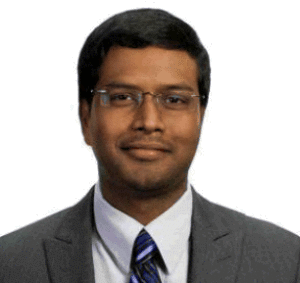 Krishnanjan Gubba Ravikumar is a Senior Engineer at Schweitzer Engineering Laboratories, Inc. (SEL) in the Engineering Services Special Protection Systems (ES SPS) group. He has over nine years of experience in power system modeling and simulation, system studies, power management systems and remedial action schemes (RASs) for wide-area control, synchrophasor integration and applications, technical documentation, and customer training. He has also acquired extensive knowledge in power system operations and photovoltaic (PV)-based distributed generation. During his service in R&D, he worked with utility and industrial engineers to specify, design and implement wide area synchrophasor systems, applied synchrophasor solutions through customer visits, provided product demonstrations and training, participated in product research and development and participated in power system industry technical meetings and conference. He has authored numerous technical papers and an active member of IEEE Power & Energy Society.
Krishnanjan Gubba Ravikumar is a Senior Engineer at Schweitzer Engineering Laboratories, Inc. (SEL) in the Engineering Services Special Protection Systems (ES SPS) group. He has over nine years of experience in power system modeling and simulation, system studies, power management systems and remedial action schemes (RASs) for wide-area control, synchrophasor integration and applications, technical documentation, and customer training. He has also acquired extensive knowledge in power system operations and photovoltaic (PV)-based distributed generation. During his service in R&D, he worked with utility and industrial engineers to specify, design and implement wide area synchrophasor systems, applied synchrophasor solutions through customer visits, provided product demonstrations and training, participated in product research and development and participated in power system industry technical meetings and conference. He has authored numerous technical papers and an active member of IEEE Power & Energy Society.
 Abdel Rahman Khatib, P.E. (S 2016, M 1999), received his B.S. and M.S. in electrical power engineering from Military Technical College in Egypt. He received his Ph.D. in Electrical Engineering from Virginia Tech in 2002. Abdel Rahman is working as a senior power system engineer at Schweitzer Engineering Laboratories, Engineering Services, Inc. He has 7 years of Industrial experience focus on Power Management System (PMS) design, testing and commissioning for petrochemical and oil industries PMS. His current research interests are power system modeling, micro-grid power system load flow and dynamic stability, and power system protection. He has 12 years of university teaching experience in different counties. Abdel Rahman is a registered professional engineer in Washington, California, and Texas.
Abdel Rahman Khatib, P.E. (S 2016, M 1999), received his B.S. and M.S. in electrical power engineering from Military Technical College in Egypt. He received his Ph.D. in Electrical Engineering from Virginia Tech in 2002. Abdel Rahman is working as a senior power system engineer at Schweitzer Engineering Laboratories, Engineering Services, Inc. He has 7 years of Industrial experience focus on Power Management System (PMS) design, testing and commissioning for petrochemical and oil industries PMS. His current research interests are power system modeling, micro-grid power system load flow and dynamic stability, and power system protection. He has 12 years of university teaching experience in different counties. Abdel Rahman is a registered professional engineer in Washington, California, and Texas.
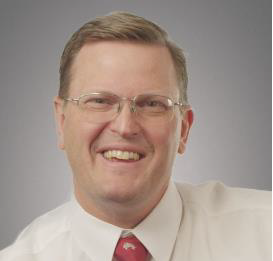 Scott Manson received his M.S.E.E. in electrical engineering from the University of Wisconsin– Madison and his B.S.E.E. in electrical engineering from Washington State University. Scott is currently the engineering services technology director at Schweitzer Engineering Laboratories, Inc. (SEL). In this role, he provides consulting services on control and protection systems worldwide. He has experience in power system protection and modeling, power management systems, remedial action schemes, turbine control, and multi-axis motion control for web lines, robotic assembly, and precision machine tools. Scott is a registered professional engineer in Washington, Alaska, North Dakota, Idaho, and Louisiana.
Scott Manson received his M.S.E.E. in electrical engineering from the University of Wisconsin– Madison and his B.S.E.E. in electrical engineering from Washington State University. Scott is currently the engineering services technology director at Schweitzer Engineering Laboratories, Inc. (SEL). In this role, he provides consulting services on control and protection systems worldwide. He has experience in power system protection and modeling, power management systems, remedial action schemes, turbine control, and multi-axis motion control for web lines, robotic assembly, and precision machine tools. Scott is a registered professional engineer in Washington, Alaska, North Dakota, Idaho, and Louisiana.
Back to top


